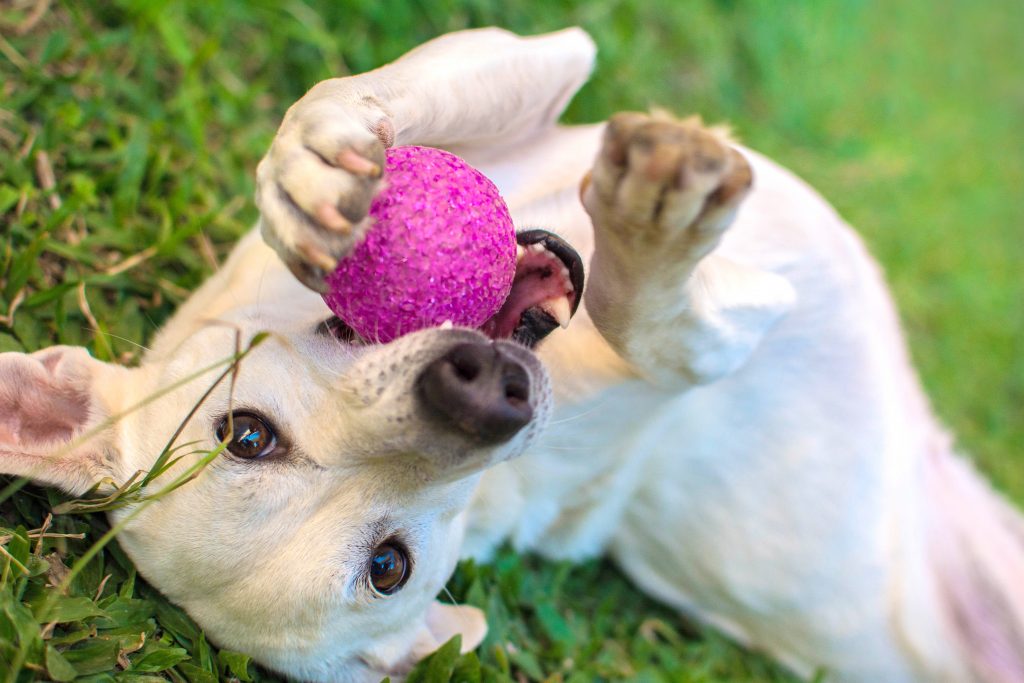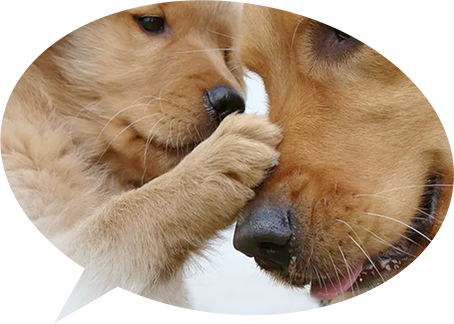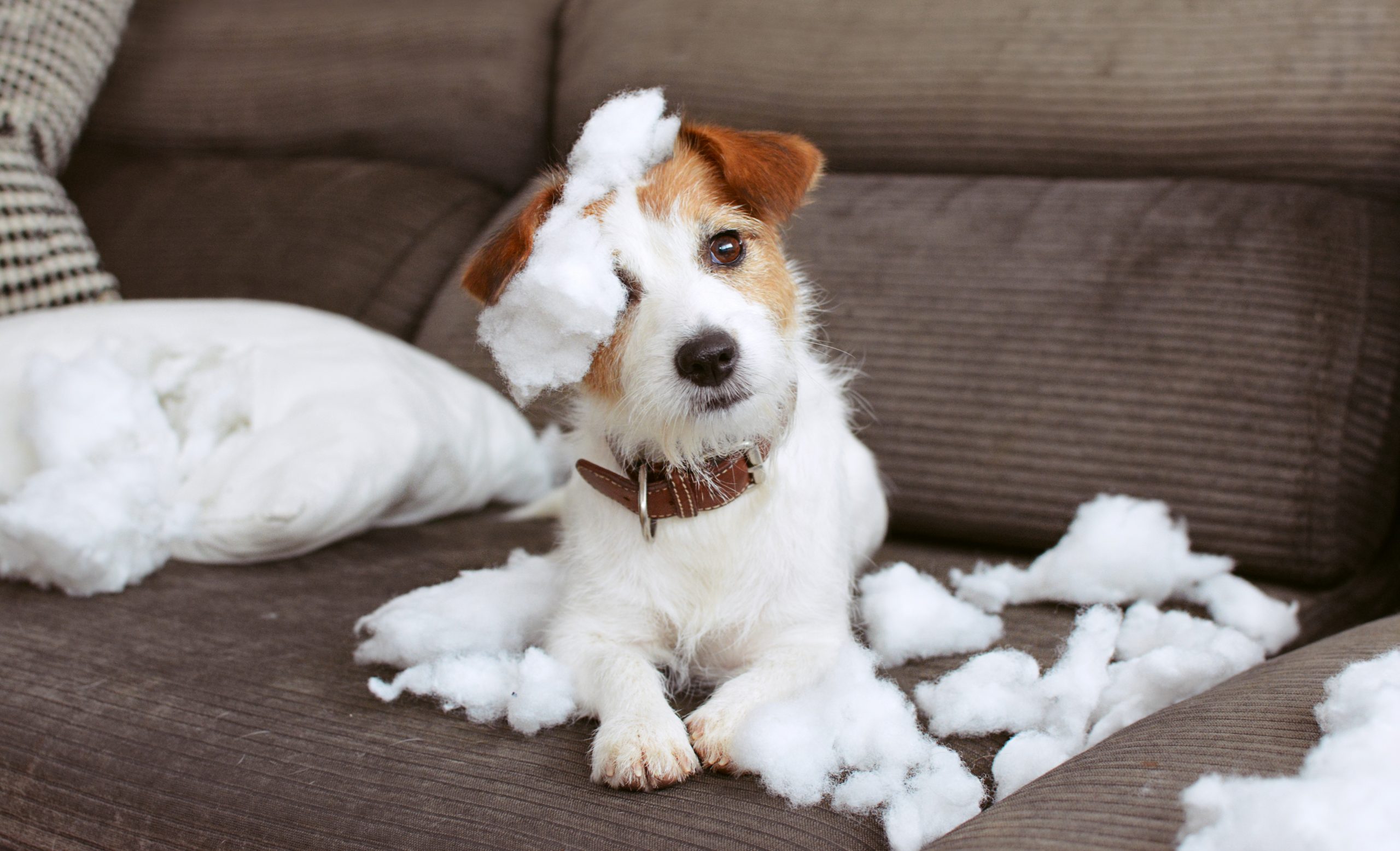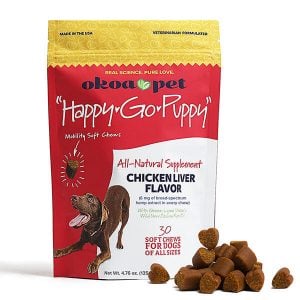How to Help Soothe your Dog’s Separation Anxiety
No More Sad Goodbyes: How to Help Soothe your Dog Who Has Separation Anxiety
It’s so hard to say goodbye. Even though you know you’re going to return in just a few hours, it’s tough to leave your dog alone. It can be especially difficult if your dog has trouble coping with spending time without you. Separation anxiety in dogs is a common issue for many pet parents.
All dogs want to be with the humans they love and eagerly wait for them to come back. For dogs with separation anxiety, though, spending time alone can be unbearable. They’re unable to settle down and nap, and while trying to console themselves, they can get into a lot of trouble.
Separation anxiety is one of the most common causes of behavioral issues; around 15-20% of domestic dogs suffer from the phobia. Vocalizations, like barking and whining, the destruction of property, potty accidents, and self-mutilation, are all signs that your dog has anxiety. Consequently, your four-legged friend needs your help feeling safe and secure when spending time alone.
Why Do Dogs Get Separation Anxiety?
When your dog was a tiny puppy, it was necessary for their survival to be conscious of when they were separated from their mother. Young puppies must cry when their mother leaves so she will quickly return to them.
For most dogs, this instinct slowly fades as they learn to feel secure in their permanent home with their adoptive parents. It’s not unusual for puppies to bark and whine when they’re first left alone. With time they generally grow out of this behavior.
Sometimes, though, dogs have trouble developing those feelings of security. A 2001 study explored possible risk factors associated with separation anxiety in dogs. Dogs who live with just one human were found to be at higher risk. Those adopted from a shelter were also found to be more susceptible. Interestingly, having a second dog seemed to have no influence on separation anxiety. Therefore, it probably would not be helpful to get your dog a friend to keep them company while you’re away.
It’s also possible for a dog to develop separation anxiety when there is a change in routine or schedule. For example, when a parent gets a new job that requires them to work longer hours.
However, “spoiling” your dog or loving them too much will not cause separation anxiety. Letting your dog sleep on your bed or feeding her from the table have been found not to contribute to dog separation anxiety.
Spying on Your Dog
In order to create an effective treatment plan, you’ll need to learn what behaviors your dog is engaging in while you’re away. This will give you a better understanding of what could be triggering them.
For example, many dogs with separation anxiety also have other mental health conditions, such as a noise phobia. Are there people passing by your home while you’re away? Are your neighbors doing construction on their house? These sounds can be triggering when you’re home, but all the more frightening when you’re not there to reassure your dog, “it’s okay!”
You can use tinted window clings, baby gates, or even calming music to help block out overstimulating sights and sounds.
You may discover that your dog paces at the front door or stares out the window longing to see your vehicle pull up to the driveway. In that case, it may be helpful to confine your dog to a room, playpen, or crate when you’re away. For a dog, waiting for your human to come home is like watching a kettle boil. Fixating on it will only make it seem to take longer.
Preparing Your Dog for The Day
What you do before you leave can transform the scope of your dog’s day.
Does your dog whine and pace while you put your shoes on? Do they cry when you reach for your car keys? Dogs quickly pick up on our “departure cues,” and their hearts may start racing when they realize it’s time for you to leave.
Settling your dog in a crate or another room so they can’t watch you get ready to leave can eliminate the painful anticipation they experience with those departure cues. And no, you certainly do not have to ignore your dog when you’re helping them settle in.
A small 2018 study suggests that dogs deal with separation better when offered a gentle goodbye. The researchers found dogs whose parents pet them before a short absence had a lower heart rate and lower levels of cortisol (the stress hormone) in their saliva compared to dogs whose parents ignored them before leaving.
Tools to Help Your Dog Overcome Separation Anxiety
Your dog loves everything about you. The sight of you, the sound of your voice, and even your scent stimulate the release of oxytocin (the love hormone!) in their brain.
Why not continue to be their source of comfort when you’re away?
In a study of 28 dogs with at least one sign of separation anxiety, researchers separated the dogs into three groups. The first was the control group. In the second group, the dogs’ parents were instructed to read their dog a ten-minute story each night before bed and to record their storytelling for playback during their absence. The third group was instructed to leave their dog with a well-worn t-shirt embedded with their scent. Dogs in both the second and third groups had significantly lower concentrations of cortisol in their saliva than dogs in the control group.
Yes, you can try this at home. Play a recording of your voice and leave your dog with a used t-shirt while you’re away to give your dog a double dose of soothing oxytocin.
A Busy Dog Is A Happy Dog

Ideally, your dog will settle into a routine of taking naps during the day while you’re at work. Dogs sleep for 12-14 hours a day, so it’s reasonable to expect your dog will catch some beauty sleep when you’re away.
It can help to make sure your dog is tired before you head out. Perhaps you can wake up 15 minutes earlier to take your dog for a run every morning. Or, maybe you can play fetch in the backyard before you leave. Even a quick game of tug-o-war while you catch up on the morning news can make a difference. If you can’t fit a doggy workout into your morning routine, making sure your dog gets more exercise, in general, can help improve their mental health.
For older dogs, those with chronic conditions, or otherwise cannot move around as much; mental stimulation can be as enriching and tiring as physical exercise. Just before you leave, give your dog an exciting food puzzle. A snuffle mat works well for some dogs, or you can try filling a giant Kong with their morning meal. That way, your dog will be occupied during those extra stressful moments when you’re pulling out of the driveway.
Greeting Your Dog After You’ve Been Away
Dogs with separation anxiety can sometimes be more overly enthusiastic than other dogs. They may jump up on you, lick your face, and whine. It’s important to react calmly. For instance, you may not want to greet your dog until he stops jumping if that’s a behavior you do not want to encourage. However, once your dog calms down a bit, you can softly talk to them and pet them.
Reward-Based Training Makes Good Boys Even Better
Progress is, at its best, an upwards-trending squiggly line. There’s bound to be some peaks and valleys on the way to where you want to be. When you come home to a messy accident, destroyed belongings, or an angry note from your neighbor, remember that your dog does not act out to spite you for leaving. Punishing your dog for something they did when you were gone is not only ineffective, but it can make anxiety worse.
Consider taking your dog to obedience classes or getting private training sessions from a trainer who uses up-to-date, science-based force-free techniques. You can also work with a board-certified veterinary behaviorist.
When Training and Behavior Therapy Aren’t Enough
When dogs are experiencing extreme stress, their “fight or flight” response kicks in, and their digestive system slows down. They may find it impossible to calm down long enough to eat, rendering a food puzzle useless. Even with environmental management, training, and exercise, your dog may still panic when you leave. That does not mean that these things do not work; it’s just that you may need to enlist in some extra help while they adjust to spending time alone.
Calming supplements can disengage your dog’s fight or flight response so they can enjoy that puzzle toy, listen to your carefully curated music therapy playlist, and maybe even have a relaxing snooze. Above all, you may no longer return to a frazzled dog and an overturned home.
For the best chance at taking the edge off your dog’s anxiety, choose a premium calming supplement formulated by a veterinarian.
Okoa Pet “Hush, Puppy” CBD+ calming treats are more than just another CBD chew. They are packed with CBD derived from broad-spectrum hemp and other proven, calming ingredients including chamomile, tryptophan, and choline. Holistic veterinarian, Dr. Rob Silver, developed the formula with the goal of combining the most effective natural calming ingredients to optimize effectiveness. It’s the vet-formulated, vet-approved holistic formula that helps dogs adjust to the craziness of our everyday lives.








